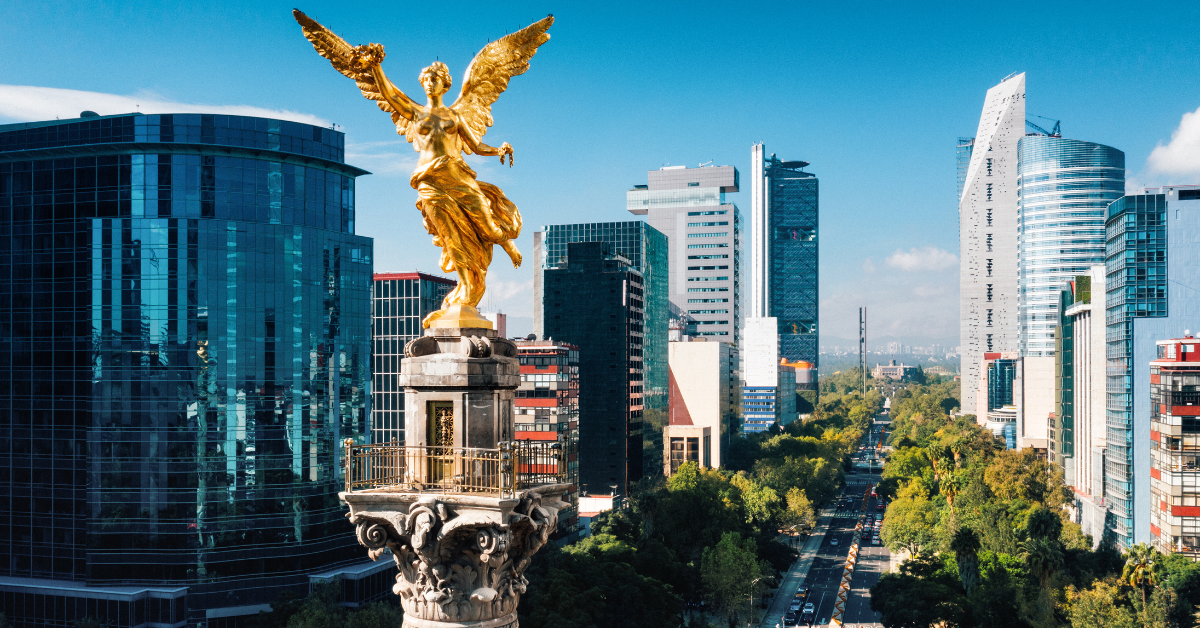Mexico City is the capital of Mexico and a major center of culture and economy. For many Japanese, it is seen as a city where Latin energy and historical charm come together. This article explores both the positive impressions and the concerns Japanese people associate with the city.
The Urban Impression of Mexico City
Mexico City is one of the largest metropolitan areas in North America, combining modern urban functions with historic heritage. Skyscrapers in the business districts stand alongside colonial-era neighborhoods, while the ancient ruins of Teotihuacan lie nearby. This diversity reinforces the impression among Japanese visitors that it is a “city on a grand scale.”
On the other hand, issues such as traffic congestion and air pollution persist, leading to the view that it is a city that is “energetic but lacking in calm.” Its elevation of over 2,200 meters also makes visitors prone to shortness of breath, further strengthening the perception of it as a “city in a unique environment.”
Positive Impressions Among Japanese People
In terms of tourism and cultural experiences, Mexico City generates many positive impressions among Japanese visitors.
| Positive Impressions | Details |
|---|---|
| Rich history and arts | Frida Kahlo Museum and National Museum of Anthropology are highlights |
| Food culture | From street foods like tacos and tortas to fine dining |
| World heritage | Zócalo Square and Teotihuacan are internationally renowned |
| Urban vitality | Energetic atmosphere in markets and public squares |
The diversity of its food culture is particularly attractive to Japanese travelers, leading to the image of Mexico City as a “city where you can embark on culinary adventures.” Artistic traditions, such as murals and music, also provide cultural experiences on a scale rarely seen in Japan.
Negative Impressions Among Japanese People
Despite its appeal, Mexico City also evokes certain concerns among Japanese people.
| Negative Impressions | Details |
|---|---|
| Safety | Reports of theft and robbery reinforce the image of a “dangerous city” |
| Environmental issues | Air pollution and exhaust fumes raise health concerns |
| Traffic congestion | Both road and metro systems are often overcrowded |
| High-altitude effects | Visitors worry about health issues due to elevation |
These impressions are often amplified by news and word of mouth, rather than by direct experience. While safe neighborhoods exist, Japanese people generally perceive Mexico City as a “city requiring caution.”
Mexico City Seen Through Sports
Mexico City has also left a strong impression on Japanese people in the realm of sports. The 1968 Mexico City Olympics became known for how altitude affected performance, reinforcing its image as a “venue for high-altitude sports.”
In addition, the city’s passionate soccer culture is widely recognized in Japan. Clubs such as Club América and Cruz Azul are well known, while Estadio Azteca has gained fame as the “cathedral of football.” Baseball and lucha libre (Mexican professional wrestling) are also popular, with lucha libre in particular influencing Japanese wrestling through its flamboyant masks and acrobatic style.
| Sports Attractions | Japanese Impressions |
|---|---|
| Olympics | Records broken under unique high-altitude conditions |
| Soccer | A national sport with passionate fan culture |
| Lucha Libre | Mask traditions and aerial techniques influenced Japanese pro wrestling |
| Baseball | Popular in certain regions, familiar to Japanese audiences |
Through sports, Mexico City is often perceived as a “passionate and energetic city.”
Tourism and Daily Life for Japanese
For tourism, the main charm of Mexico City lies in its diversity of experiences. Visitors can explore UNESCO heritage sites, admire art in museums, or enjoy local food at markets and street stalls. Even on short trips, Japanese tourists find it to be a city where they can have a “rich cultural experience.”
In daily life, the presence of Japanese restaurants and supermarkets offers reassurance to expatriates and travelers alike. Communities of Japanese residents exist, creating a support network for newcomers. However, challenges such as safety and traffic remain, which leads Japanese residents to describe it as a city where “convenience and anxiety coexist.”
| Daily Life Features | Japanese Perceptions |
|---|---|
| Access to Japanese food | Restaurants and stores provide comfort |
| Convenience of a global city | Opportunities for multicultural exchange |
| Cultural stimulation | Exposure to arts, music, and festivals |
| Cautions | Awareness of safety and environmental concerns is essential |
Conclusion
The image Japanese people have of Mexico City is that of a city where “charm and concern coexist.” Through culture, art, cuisine, and sports, it is seen as a place “full of vitality and diversity.” At the same time, issues of safety and the environment give rise to the perception that it is a city requiring caution.
The influence of the Olympics and soccer has also shaped its identity as a sports capital, making it more than just a tourist destination. Ultimately, Mexico City changes its face depending on the purpose of one’s visit. For Japanese people, it is a city where “the expectation of discovery and the caution of safety awareness live side by side.”






